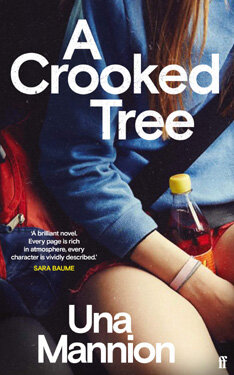“Luster” is an excellent and accomplished novel in so many ways. To start with, it has such a gripping and tense story. Edie is a wayward young black woman who begins an affair with Eric, a much-older white man who is in an open marriage. Gradually Edie becomes intimately involved not only with Eric but his white wife Rebecca and their adopted adolescent black daughter Akila. This dynamic makes for a juicy enough plot with all its inbuilt conflicts in regards to economic, sexual and racial politics in current-day America, but Raven Leilani also expertly draws out the tension of this story so the reader is always guessing at its meaning and the motives of her characters. It's no wonder that this has become one of the buzziest books at the start of the year here in the UK having already made a splash in the reading community when it was first published several months ago in the US. I was glued to this novel over the weekend and couldn't put it down even while I was eating meals (which is something I normally try to avoid because it's messy and unsocial to ignore my partner during dinner.)
This book also voices the concerns and depicts the sensibility of millennials in such a sympathetic and meaningful way. Edie's job at a children's publisher isn't going much of anywhere. She's had several messy affairs with colleagues. Both her parents are deceased. She's beset by student loan payments which threaten to financially and spiritually crush her on a month by month basis. At one point Edie is thinking about paying the rent and observes “I only have enough money for two months. I only have enough money for a month and an abortion”. Twined with this sobering and tragic reality is a humorous authorial eye for the absurdities and contradictions of modern life. There are frequent astute observations made about the online world and office politics including posting on social media and deleting it when it gets no likes; compulsively shopping by putting things in virtual shopping carts and not completing the purchase; and working in an open plan office where you are never eavesdropping but “accepting your silent role in everyone's conversation”. These elements expertly and meaningfully evoke the everyday mindset of a generation beset by very particular dilemmas.
There's a tragi-comic tone to the entire narrative which works so effectively to simply testify to this particular point of view rather than explain or offer any easy answers. I could feel the sliding scale of Edie's joy and pain although very little emotion is expressed in the character's dialogue or thoughts. Whenever she's outside the couple's house Edie is aware of a female neighbour who steadily watches her from her window. At one point when she's mowing the lawn Edie gets fed up with this surveillance and marches up to the window to match the neighbour's gaze but the mower veers into the street. This tense situation which could have resulted in a dramatic climax instead becomes a ludicrous spectacle and this felt very true to life in how simmering anxieties often result in pratfalls rather than satisfying showdowns. The awkward love triangle at the centre of the novel plays out in a similar way where clumsy gestures often take the place of sincere emotional exchanges. Truth leaks out in messy ways which leads the characters to stoically sit with this revealed information rather than maturely process or react to it.
It's concerning how all of the adults at the centre of this story seem to be partly trapped in a child-like state as they regress into adolescent activities. For his first date with Edie, Eric takes her to an amusement park. At one point Rebecca dyes her hair and goes to a gig where she strips her top off and plunges into a mosh pit as if she were still a teenager. Edie herself frequently reverts to comfort-viewing old episodes of Mister Rodgers' Neighbourhood and drinks from a cup with a cartoon environmental superhero on it. In a strange way, Akila feels like the most emotionally mature character in the novel as she's painfully aware of the perilousness of her state of being and knows this stable environment will be lost if the relationship of her adopted parents fails. Akila is also isolated as a black girl in a white household where Edie becomes a touchstone that not only teaches her how to treat her hair but also conveys that she will inevitably be a target of police brutality. This prompts Edie to reflect how “It must be strange for every black kid, when their principal authority figures break the news that authorities lie.”
As welcoming and seemingly liberal as Eric and Rebecca seem their actions and decisions are highly suspect. There are touches of humanity to these characters amidst their blundering, underhanded aggression and therapy babble. Yet, it's incredibly cringe-worthy and uncomfortable how Eric's commitment to adopting Akila is equal to his intent on having an affair and aggressive sex with Edie. Meanwhile, Rebecca’s cool aloofness belies a savage barbarism which is reflected in her work performing autopsies and how she believes a thing (or person) can't be fully understood until it's literally taken apart. They might be naively good-intentioned but I think there is a power dynamic cruelly at play as the couple's economic and racial dominance over the girls is a part of the caste system in America (as brilliantly described in Isabel Wilkerson's book) so it's not so much a question of racism but the way conditioned roles are played out in this state of inbuilt inequalities. Edie is so resignedly accustomed to this painful reality that she sharply and sombrely observes how “racism is often so mundane it leaves your head spinning, the hand of the ordinary in your slow, psychic death so sly and absurd you begin to distrust your own eyes.”
The many deeper meanings of this story quietly unfold as the drama plays out with alternating moments of hilarity and startling tragedy. I also relished Leilani's wordplay and power of description with objects becoming headily infused with emotions and nostalgia such as “the high-fructose sun of the park” that made me feel like I was drowning in the insufferably sweet soft drink SunnyD. This is a writer with a formidable talent in how she imbues experience and meaning into the everyday life of her characters. I had tender feelings for them even as I felt critical or repulsed by their actions. In recent years, there have been several novels which speak to the pressing concerns of a newer generation such as “Problems” by Jade Sharma, “Sour Heart” by Jenny Zhang, “Conversations with Friends” by Sally Rooney and “Rainbow Milk” by Paul Mendez. I'm glad “Luster” has added another newly pressing, dynamic and skilfully-rendered side to the story of our lives as they are experienced today.
























